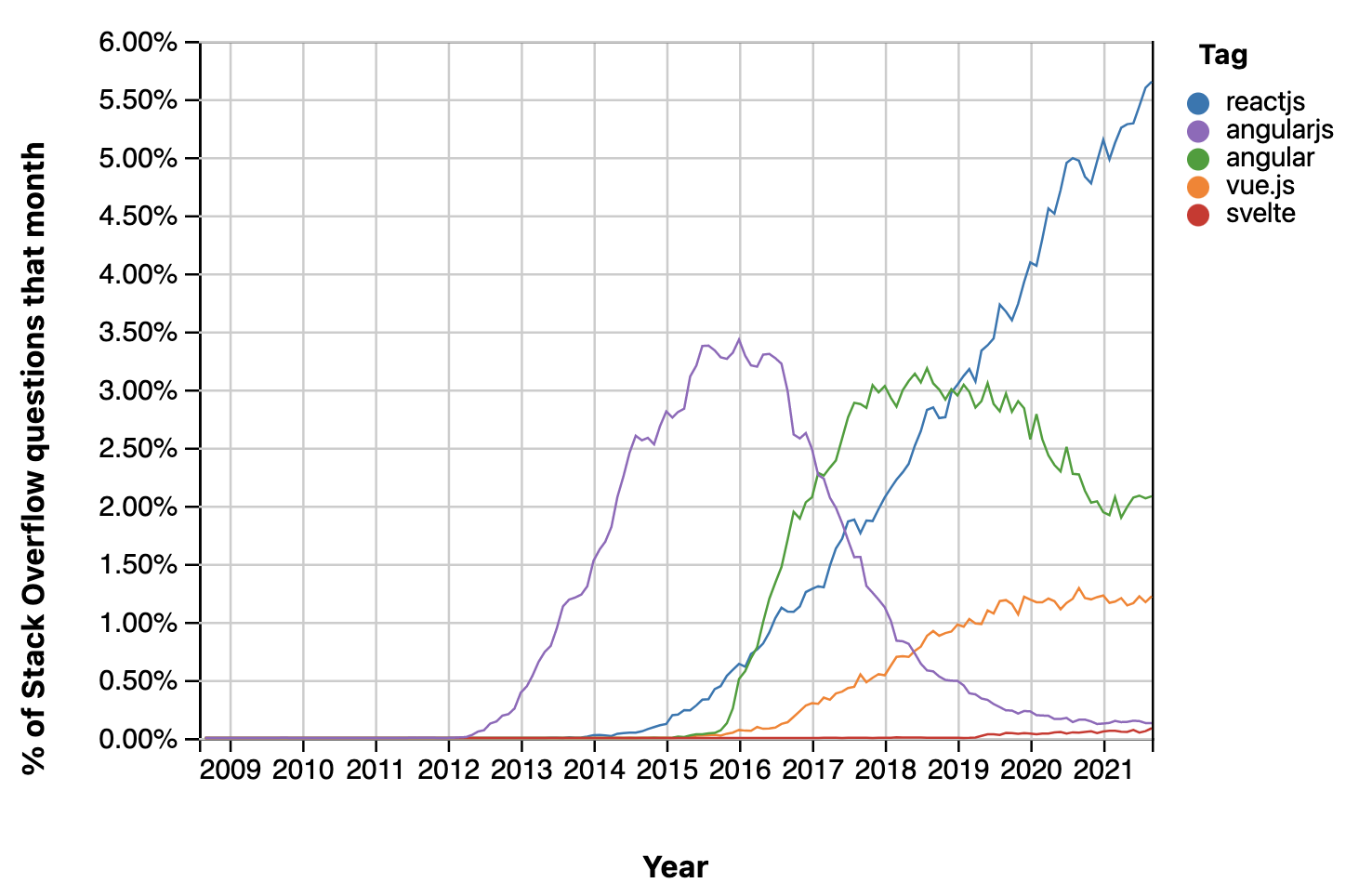If you just want my opinion and nothing else from this article, here it is:
Let's go over in detail why each of these decisions were made.
Why not [insert other web framework here]?
While there is obviously some flexibility when it comes to picking your front-end framework, I truly believe that for the near-to-medium term future Next.js will end up on top.
The first argument for Next.js is that it's "just" a meta-framework on React. React, to this day is still the most popular web framework, and unfortunately when it comes to good decisions for tech it just ends up being a popularity contest. Right now, React is winning this contest big time.

If you want to build a skill-set, people are hiring for React right now. If you want to hire people, choosing React for your project guarantees a larger pool of potential canididates. It's a vicious cycle.
On top of just being a meta-framework, its development is being generously funded by the all-powerful Vercel (who recently raised over $100 million). Due to an incredible development effort, its DX is incredibly far ahead of the competition and I find it unlikely to lose this lead anytime soon.
Next.js also comes with the flexibility that is generated from being open-source and well documented. You COULD choose to manually deploy your app, or you could choose from a range of tech startups like Netlify or Vercel themselves.
What I've covered so far are the meta-reasons to use Next.js. In reality, there are a ton of features which honestly make it amazing to use:
react-router!)SSG or SSR)It also comes with compatibility for some of the other technology on the list, which makes it even more convenient.
Why not plain css or [insert other css abstraction layer]?
This is probably the most opinionated part of this whole article. Tailwind is honestly one the best technologies I've recently discovered and I highly recommend it for anyone trying to get something done fast but with customizability.
If you honestly don't care about customizability, I have two things to suggest:
react-bootstrap for nowI'll give you the elevator pitch and move on:
Quick Tip: I was originally going to write a whole section about react-icons
but honestly the name explains it perfectly. If you need icons quickly to
prototype and move on, use react-icons. Enough said, we're moving on to the
back-end.
Why not [insert other database solution here]?
This one is also going to be pretty controversial, especially since I continue to say, and have said in the past that you should use MongoDB.
My philosophy when designing the ultimate tech stack is something that will scale "good enough" while having a really good DX. MongoDB theoretically scales better but the unorganized JSON data and lack of true SQL-like solutions really makes it unfit for production applications in my opinion. Wrappers like Mongoose do a decent job at making it tolerable but it's not really a true solution.
But once again to get back to features instead of comparisons with everything else:
The phenominal thing is that if your database ends up not scaling, you can always move to something like Amazon Aurora which will deal with the scaling for you. That's the magic of a universal querying language (though honestly if your infrastructure relies on decentralized raw queries, you have bigger problems).
This serverless jamstack architecture has been overhyped for a while, but I think that the technology is just now finally catching up to the ideals.
With technology like Edge Functions finally filling the performance gap between serverless and serverfull solutions, I think now is the right time to start building apps using this power. The simplicity of an api route being a single typescript file as well the infinite horizontal scaling of these functions seem to make them the future of the web.
// simply place this in pages/api/example.ts and watch the magic happen!
import { NextApiRequest, NextApiResponse } from "next";
export default function handler(
request: NextApiRequest,
response: NextApiResponse,
) {
response.status(200).json({
body: request.body,
query: request.query,
cookies: request.cookies,
});
}The future is now old man and here is your chance to grasp it.
I truly believe that the tech stack I've presented is good enough to get someone from an idea, all the way to 100 thousand users (which was the goal). Without completely overengineering the stack, I think this is a good way to go about making websites.
If you have different opinions, let me know! I'd love to have a dialogue and hear your perspective.
If you're interested in more from me, subscribe to my blog! I post like twice a month so honestly it's not going to fill your inbox.
Comments